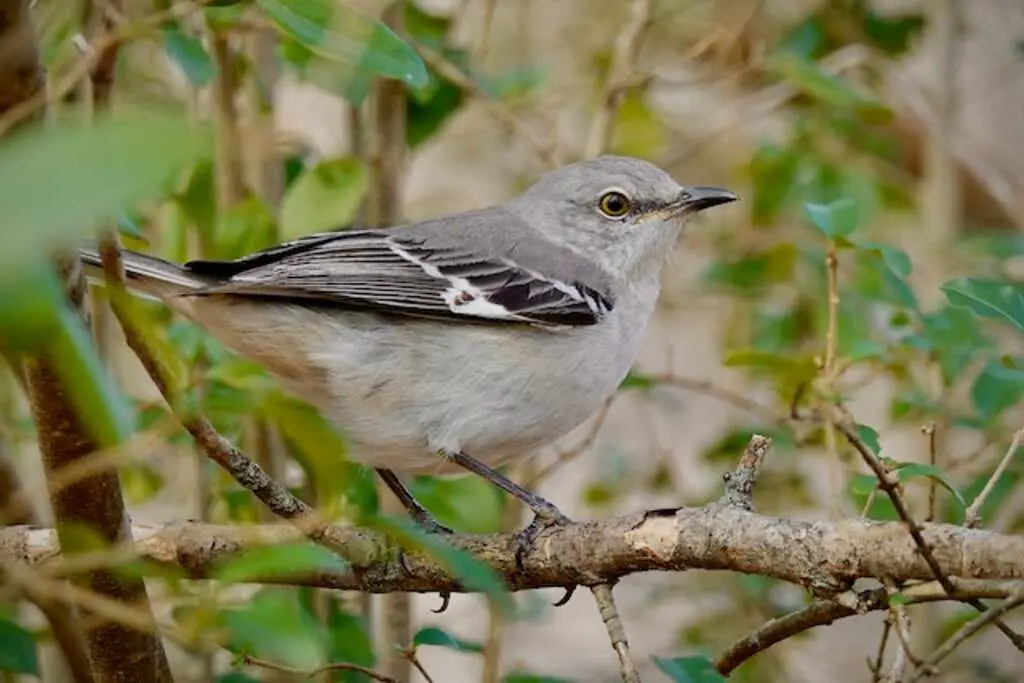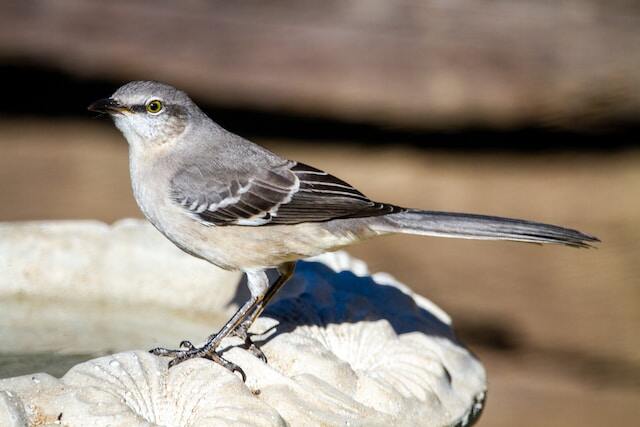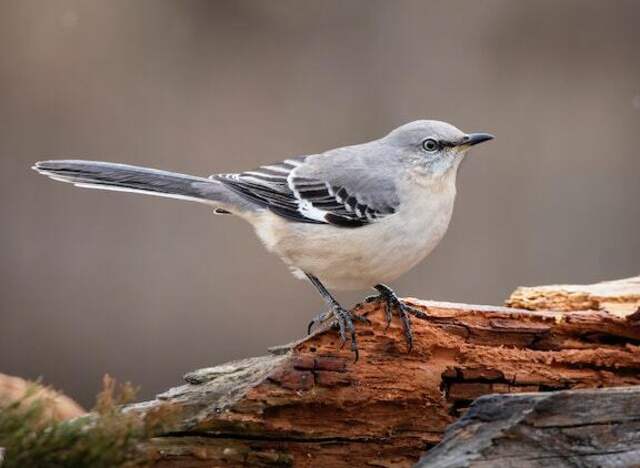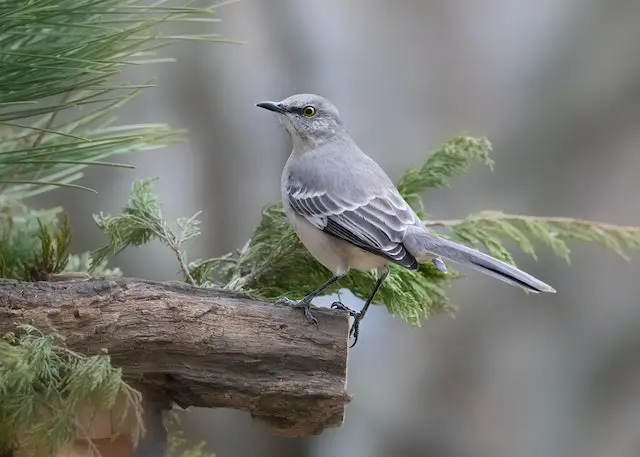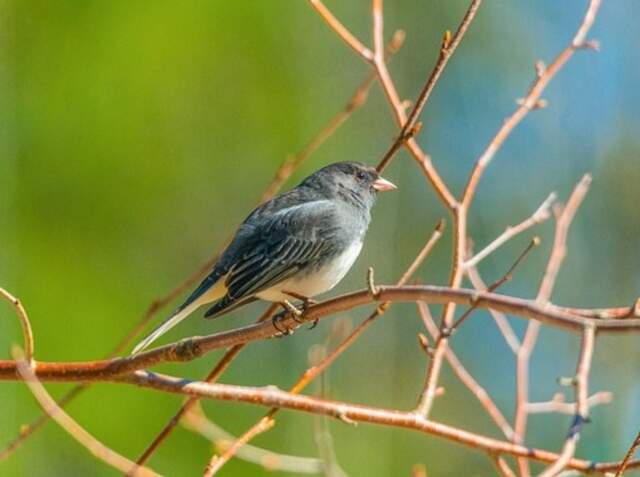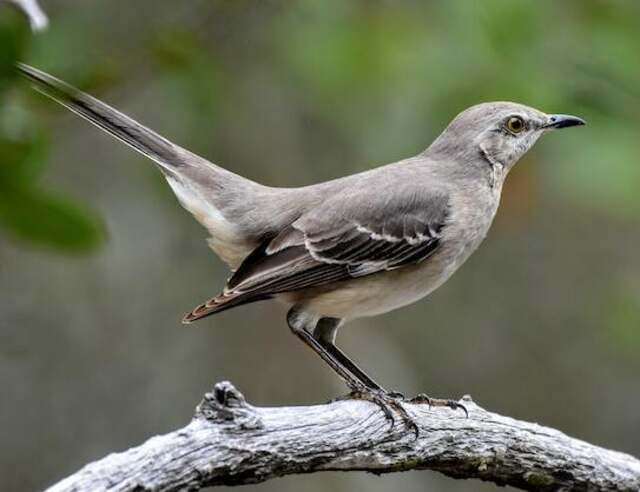Mockingbirds are beautiful and captivating creatures that have been admired by many for their melodious songs and stunning appearance. However, as they say, too much of a good thing can be bad.
If you have ever had a mockingbird nesting in your backyard, you know that their constant chirping can quickly become a nuisance.
In fact, the irony of these birds is that while they are beloved for their singing, they can be a real pain to have around.
In this article, we will explore various methods of how to get rid of mockingbirds while ensuring their safety and well-being.
Whether you are a bird lover or not, it is essential to know how to handle a mockingbird invasion.
These birds are territorial and can become aggressive towards humans and other animals if they feel threatened. Moreover, their droppings can create a mess and pose health risks to humans and pets.
Therefore, it is crucial to approach the situation carefully and responsibly.
In the following sections, we will discuss natural and chemical methods of removing mockingbirds, as well as engaging professional assistance, and preventing their return.
Table of Contents
- 1 Natural Approaches for Removing Mockingbirds
- 2 Chemical Solutions for Eliminating Mockingbirds
- 3 Engaging Professional Assistance in Eradicating Mockingbirds
- 4 Preventing the Return of Mockingbirds
- 5 Frequently Asked Questions
- 5.1 What are the legal implications of removing mockingbirds?
- 5.2 Can I use a fake owl or other decoy to deter mockingbirds?
- 5.3 Do mockingbirds pose any health risks to humans or pets?
- 5.4 How long will it take for a professional to eradicate a mockingbird problem?
- 5.5 Will removing mockingbirds affect the local ecosystem or other wildlife in the area?
- 6 Conclusion
- 7 Author
Natural Approaches for Removing Mockingbirds
This discussion focuses on natural approaches for removing mockingbirds, which can be useful for those who wish to avoid using harmful chemicals or methods.
Some of the key points to consider include harnessing the power of predator decoy birds, utilizing reflective elements to disorient the birds, and embracing the soothing tones of wind chimes to deter them.
Other strategies include implementing bird netting for protection, deploying deterrents in the form of scarecrows, cultivating non-fruit bearing trees, and maintaining a pristine environment.
By adopting these methods, it is possible to create a more harmonious coexistence with mockingbirds while protecting property and minimizing disruptions.
Harnessing the Power of Predator Decoy Birds
The utilization of predator decoy birds presents a potential solution for mitigating the presence of avian disturbances caused by a certain species of passerine birds, such as mockingbirds.
By using predator decoy birds, such as owls or hawks, homeowners and businesses can create an environment that mimics natural predator-prey interactions, which may deter mockingbirds from frequenting the area.
This method can be a humane and effective alternative to using bird repellent sprays or seeking professional help to get rid of mockingbirds.
Additionally, the use of predator decoy birds can provide a natural and sustainable solution that does not harm the environment or other wildlife.
However, it is important to note that this method may not work for all situations and may require strategic placement of decoy birds.
As we explore innovative solutions for mitigating the presence of mockingbirds, utilizing reflective elements can also be a potential solution worth exploring.
Utilizing Reflective Elements
Incorporating reflective elements in the environment could offer a promising solution in addressing the issue of avian disturbances caused by certain species of passerine birds, such as mockingbirds.
The principle of light reflection can be utilized as a possible deterrent by installing reflective tape or materials that are capable of reflecting sunlight to deter mockingbirds from nesting or perching in specific areas.
Additionally, bird netting can be installed in areas that may be particularly prone to mockingbird activity.
The use of reflective elements is an innovative approach that can potentially reduce the need for harmful methods, such as pesticides or trapping, while still effectively controlling mockingbird activity.
This method can be particularly useful in urban areas where other methods may not be feasible.
In the next section, we will explore another innovative approach to addressing mockingbird disturbances by embracing the soothing tones of wind chimes.
Embracing the Soothing Tones of Wind Chimes
Can the gentle sounds of wind chimes be a sustainable and non-harmful solution to deter passerine birds like mockingbirds from nesting or perching in certain areas?
Wind chimes have been used for centuries to create a calming and soothing atmosphere, but recent studies have shown that their musical tones can also have a practical application in bird control.
Here are four reasons why embracing the soothing tones of wind chimes can be a natural way to get rid of mockingbirds without causing harm to the birds or the environment:
First, wind chimes create a harmonious and peaceful environment that can be enjoyed by humans and animals alike.
Second, the gentle sounds can be used to disrupt the mockingbird’s natural patterns, making it less likely to establish a territory in the area.
Third, wind chimes do not require any chemicals or harmful substances, making them an eco-friendly solution to bird control.
Fourth, wind chimes are an affordable and accessible option that can be easily installed in any outdoor space.
By embracing the gentle tones of wind chimes, we can create a peaceful environment while also protecting our outdoor space from unwanted bird activity.
As we consider implementing bird netting for protection, let us not forget the natural solutions that can also contribute to a sustainable and harmonious environment.
Implementing Bird Netting for Protection
Implementing bird netting is a practical and effective solution for protecting outdoor spaces from unwanted bird activity, as it creates a physical barrier that prevents birds from accessing the area.
Covering with mesh to keep mockingbirds away is a great way to keep them from nesting in your yard. Additionally, planting non-fruit bearing trees can also help deter mockingbirds from nesting in your yard.
Using predator decoy birds can also be an effective method of deterring mockingbirds, as they will believe that there is a predator nearby and will avoid the area.
These methods are not only effective but also humane.
Deploying deterrents in the form of scarecrows can also be an effective method of deterring mockingbirds.
By strategically placing scarecrows in your yard, you can create a sense of danger for mockingbirds, which will keep them from nesting in your yard.
Overall, implementing bird netting and other deterrents is an excellent way to protect your outdoor spaces from unwanted bird activity.
Deploying Deterrents in the Form of Scarecrows
While bird netting is an effective way to protect crops from mockingbirds, it can be expensive and time-consuming to install.
As an alternative, deploying deterrents in the form of scarecrows can be a cost-effective solution.
Scarecrows have been used for centuries to keep birds away from crops, and they can be quite effective at deterring mockingbirds as well.
To enhance their effectiveness, bird repellent can be applied to the scarecrows.
If you are unsure about how to create or use scarecrows as a deterrent, seeking advice from wildlife experts can be helpful.
They can offer tips on placement and design, as well as advice on how to use other non-lethal deterrents.
In the next section, we will discuss cultivating non-fruit bearing trees as another means of discouraging mockingbirds from your property.
Cultivating Non-Fruit Bearing Trees
Cultivating non-fruit bearing trees is a viable option for discouraging mockingbirds from damaging crops.
According to a study conducted by the University of Florida, planting trees such as bald cypress and sweet gum can reduce bird damage to crops by up to 50%.
These trees provide nesting and foraging habitats for birds, which can prevent them from attacking crops.
Moreover, planting non-fruit bearing trees can help keep the ecosystem clean, as they absorb carbon dioxide and produce oxygen.
To further deter mockingbirds, reflective tape can be hung from the trees, which can scare the birds away when they catch the reflection of light.
In addition to protecting crops, planting non-fruit bearing trees can also enhance the aesthetic value of the landscape.
Maintaining a pristine environment is crucial for promoting biodiversity and ensuring the survival of various species.
Maintaining a Pristine Environment
Maintaining a pristine environment is pivotal for preserving biodiversity and safeguarding the survival of a multitude of species, thus emphasizing the significance of consistently implementing measures that promote the protection and conservation of natural resources.
Keeping the ecosystem clean is one way to ensure that all living beings thrive in a healthy environment, and planting non-fruit bearing trees is another way to achieve this goal.
By doing so, we provide shelter and food for a variety of species while preventing an overabundance of certain animals, such as mockingbirds.
While it may be frustrating to deal with these birds, it is important to remember that there are natural ways to get rid of them that do not harm the environment or other animals.
It is our responsibility to find innovative solutions that work in harmony with nature.
In the next section, we will explore chemical solutions for eliminating mockingbirds.
Chemical Solutions for Eliminating Mockingbirds
The control of mockingbirds can be a challenging task, especially when natural approaches fail to yield the desired results. For this reason, some may turn to chemical solutions to eliminate these birds.
One potential solution is bird repellent sprays, which can be used to repel birds from specific areas.
Another option is bird gel repellents, which act as a visual and tactile deterrent to keep birds away.
Additionally, ultrasonic bird repellers and bird shock strips can also be effective in deterring mockingbirds.
Harnessing the Potential of Bird Repellent Sprays
One potential solution for addressing the presence of mockingbirds involves the utilization of bird repellent sprays, which may provide a means of deterring the birds from frequenting certain areas without resorting to more drastic measures such as culling or relocation.
Chemical methods to get rid of mockingbirds can be dangerous and harmful to both the birds and the environment, making bird repellent sprays a safer option.
These sprays work by emitting an unpleasant scent or taste that the birds find unappealing, causing them to stay away from the targeted area.
When using bird repellent sprays, it is important to follow the instructions carefully and use them in moderation to avoid harming other wildlife or plants.
Additionally, it is important to note that bird repellent sprays may not be effective in all situations, as mockingbirds may become accustomed to the scent or taste over time.
However, when used correctly, bird repellent sprays can be a humane and effective way to deter mockingbirds from areas where they are not wanted.
Utilizing bird gel repellents can also be an effective alternative, and will be explored in the subsequent section.
Utilizing Bird Gel Repellents
Utilizing bird gel repellents is a potential solution for deterring the presence of unwanted birds. These repellents offer a safe and effective means of deterring birds without resorting to harmful methods.
They work by reflecting sunlight to deter mockingbirds and can be easily applied to surfaces such as ledges, roofs, and trees. Additionally, covering these areas with mesh can help keep mockingbirds away.
Bird gel repellents are a humane alternative to chemical methods to get rid of mockingbirds, as they do not pose a threat to the birds or the environment.
They are also long-lasting and weather-resistant. Embracing the effectiveness of ultrasonic bird repellers is another step towards achieving a bird-free zone.
Embracing the Effectiveness of Ultrasonic Bird Repellers
Utilizing bird gel repellents is an effective way to keep mockingbirds at bay, but there are other methods that can be used as well.
One such method is embracing the effectiveness of ultrasonic bird repellers. These devices emit high-frequency sound waves that are undetectable to humans but are unpleasant for birds, causing them to avoid the area.
Ultrasonic bird repellers are easy to install and can cover a large area, making them a convenient option for those looking to keep mockingbirds away.
When using ultrasonic bird repellers, it is important to keep in mind that they may not work for all bird species and environments. Here are three things to keep in mind when using ultrasonic bird repellers:
- Choose a repeller that is appropriate for the size of your property.
- Place the repeller in an open area where the sound waves can travel unobstructed.
- Use in combination with other deterrents, such as using bird repellent sprays or employing bird shock strips as a deterrent.
By incorporating these methods, you can effectively keep mockingbirds away from your property. Speaking of bird shock strips as a deterrent, let’s explore that option further.
Employing Bird Shock Strips as a Deterrent
Employing bird shock strips as a deterrent can provide an effective solution for deterring unwanted avian visitors from your property, creating a safe and secure environment free from pesky intruders.
These strips emit a mild electric shock when birds land on them, causing discomfort and discouraging them from returning.
However, it is important to note that bird shock strips should be used in conjunction with other methods such as covering with mesh to keep mockingbirds away, using bird repellent sprays, and hiring exterminators if necessary.
It is also important to use these methods ethically and responsibly, taking into consideration the safety and well-being of the birds and the environment.
If all else fails, engaging professional assistance in eradicating mockingbirds may be necessary.
Engaging Professional Assistance in Eradicating Mockingbirds
When dealing with a persistent mockingbird problem, many homeowners may find themselves at a loss for what to do.
In such cases, it may be wise to consider enlisting the help of skilled exterminators who can safely and efficiently remove the birds from the premises.
Additionally, seeking guidance from wildlife experts or consulting with local government offices can provide valuable insights into the most effective and humane ways to deal with the situation.
Enlisting Skilled Exterminators
Hiring a professional exterminator with experience in dealing with nuisance wildlife, such as mockingbirds, may be a viable option for those seeking a humane and effective solution to their problem.
Skilled exterminators have access to specialized tools and techniques that can safely and effectively remove mockingbirds from the area.
These may include covering with mesh to keep mockingbirds away, planting nonfruit bearing trees, and using bird repellent sprays.
Additionally, exterminators can provide guidance on preventative measures to avoid future infestations.
It is important to note that seeking the assistance of a professional should always be done with compassion and respect for the animals involved.
The next step in finding a solution to a mockingbird problem may involve seeking guidance from wildlife experts.
Seeking Guidance from Wildlife Experts
Exploring the advice of wildlife experts can provide valuable insights into how to coexist with these feathered creatures while preserving personal property.
To start, these experts may suggest covering areas vulnerable to mockingbird nesting with mesh to keep them away.
Additionally, planting nonfruit bearing trees can discourage mockingbirds from nesting in the area and reduce the likelihood of aggressive behavior towards humans.
Lastly, ultrasonic bird repellers can be used to deter mockingbirds from frequenting the area.
By following these recommendations, individuals can respect the natural behavior of mockingbirds while also protecting their personal property.
Consulting with local government offices can provide additional resources and guidance on how to best manage mockingbird populations in the area.
Consulting with Local Government Offices
Consulting with local government offices can be a valuable resource for individuals seeking guidance on how to manage the presence of mockingbirds in their area while also respecting their natural behavior.
These offices can provide information on local regulations, permits, and best practices for dealing with wildlife.
One solution they may suggest is covering fruit trees with mesh to keep mockingbirds away from their favorite food source.
Additionally, planting nonfruit bearing trees can provide nesting sites for mockingbirds without attracting them to areas where they are not wanted.
It is also important to keep the ecosystem clean by removing any trash or debris that may attract mockingbirds.
By working with local government offices, individuals can effectively manage the presence of mockingbirds in their area while preserving the natural balance of the ecosystem.
Preventing the return of mockingbirds can also be achieved by implementing these solutions and making sure to maintain a clean and healthy environment.
Preventing the Return of Mockingbirds
To prevent the return of mockingbirds, several measures can be taken.
Blocking access to nests can discourage them from settling in the area.
Discouraging feeding of mockingbirds can also discourage them from staying.
Regularly pruning trees and shrubs, cultivating a bird-friendly yard with natural water sources, and utilizing sound and visual deterrents can all help to keep mockingbirds away.
Vigilantly monitoring the yard for signs of infestations can also help to detect any potential problems early on.
By taking these steps, homeowners can create a peaceful and bird-friendly environment while also preventing the return of mockingbirds.
Blocking Access to Nests
Preventing access to nesting areas of mockingbirds can be achieved through various methods, including the installation of barriers and the use of deterrents.
Here are three effective ways to block access to mockingbird nests:
1) Covering the area with mesh can keep mockingbirds from entering and nesting in the area.
2) Planting nonfruit bearing trees can make the area less attractive to mockingbirds as they prefer fruit-bearing trees.
3) Reflecting sunlight around the nesting area can deter mockingbirds as they do not like bright lights.
It is important to note that these methods should be implemented before nesting season to avoid disrupting the breeding cycle of the birds.
By taking measures to block access to nesting areas, we can peacefully coexist with mockingbirds without causing harm to them or their offspring.
Discouraging feeding of mockingbirds is another important step in maintaining a harmonious relationship with these birds.
Discouraging Feeding of Mockingbirds
Blocking access to nests is an effective way to discourage mockingbirds from nesting on your property, but it may not be enough to completely get rid of them.
Discouraging feeding of mockingbirds is another strategy that can be implemented to reduce their presence.
One way to do this is by using wind chimes, which can create a noise that is unpleasant for the birds.
Another option is to cover areas where they like to feed with mesh or netting, which can make it more difficult for them to access food.
Additionally, planting non-fruit bearing trees can also help discourage feeding, as mockingbirds are attracted to fruit.
By implementing these strategies, you can reduce the presence of mockingbirds on your property without resorting to harmful methods.
Next, we’ll discuss the importance of regularly pruning trees and shrubs to further discourage nesting.
Regularly Pruning Trees and Shrubs
Regularly pruning trees and shrubs can create an environment that is less attractive for mockingbirds to nest in.
By removing overgrown branches and foliage, you can reduce the amount of cover available for mockingbirds to hide in.
This tactic can also make it more difficult for mockingbirds to access areas where they may build nests.
Additionally, consider using wind chimes in your yard. The sound can be disruptive to birds and may deter them from nesting in the area.
Another option is to cover your trees and shrubs with mesh to keep mockingbirds away. This method can be especially effective during nesting season.
By taking these measures, you can create a less appealing environment for mockingbirds to inhabit.
Cultivating a bird-friendly yard with natural water sources is another way to support local wildlife and enjoy the beauty of nature.
Cultivating a Bird-friendly Yard with Natural Water Sources
To complement regular pruning, cultivating a bird-friendly yard with natural water sources is another effective way to keep mockingbirds at bay.
Mockingbirds require water for drinking and bathing, and providing them with a natural water source will prevent them from seeking out your property.
Here are three tips to create a bird-friendly yard:
(1) Set up a bird bath or fountain that is at least two inches deep;
(2) Plant native plants that produce berries and fruits, such as elderberry, blueberry, and blackberry bushes;
(3) Avoid using pesticides and herbicides, as these chemicals can harm birds and their food sources.
By creating a welcoming habitat for birds, you can reduce the likelihood of mockingbirds taking over your yard. However, if these measures do not work, sound deterrents may be necessary.
Utilizing Sound Deterrents
Sound deterrents can be a highly effective strategy for discouraging the presence of mockingbirds in one’s yard, as they can evoke a strong response from the birds and ultimately limit their ability to cause disturbance.
These deterrents utilize various sounds that mimic the distress calls of other birds or the sound of a predator to create an unwelcome environment for the mockingbirds.
Some popular sound deterrents include bird distress calls, ultrasonic devices, and noise-making devices. In the table below, you can see the pros and cons of each of these options.
It is important to note that sound deterrents should be used in moderation and rotated periodically to prevent the mockingbirds from becoming accustomed to them.
Employing visual deterrents, such as reflective tape or scarecrows, can also be a helpful addition to a comprehensive bird control plan.
By using a combination of sound and visual deterrents, homeowners can create a safe and peaceful environment for themselves and their feathered friends.
| Sound Deterrent | Pros | Cons |
|---|---|---|
| Bird distress calls | – Mimics natural distress signals, effectively repelling birds | – Requires knowledge of specific bird distress calls for maximum effectiveness |
| Ultrasonic devices | – Emits high-frequency sounds that are unpleasant to birds | – May not be effective for all bird species |
| Noise-making devices | – Creates loud and startling noises, deterring birds | – Can be disruptive to humans and other animals |
| Visual Deterrent | Pros | Cons |
|---|---|---|
| Reflective tape | – Reflects light and creates movement, scaring birds away | – May lose effectiveness over time if birds become accustomed to it |
| Scarecrows | – Resemble predators and intimidate birds | – May require regular repositioning to maintain effectiveness |
Employing Visual Deterrents
The implementation of visual deterrents, such as reflective tape or scarecrows, can effectively complement sound deterrents and create an unwelcoming environment for mockingbirds, promoting a peaceful coexistence between birds and humans.
Reflective tape can be used to create flashes of light that can disorient mockingbirds and deter them from nesting in certain areas.
Scarecrows can also be an effective visual deterrent as they resemble predators and can scare mockingbirds away from the yard.
It is important to note that visual deterrents should be placed strategically around the yard and changed periodically to prevent the mockingbirds from becoming accustomed to them.
By utilizing a combination of sound and visual deterrents, homeowners can effectively discourage mockingbirds from nesting in their yard.
However, it is important to remain vigilant and monitor the yard regularly to detect infestations early, ensuring that the deterrents are working effectively.
Vigilantly Monitoring the Yard to Detect Infestations Early
Regularly monitoring the yard for signs of mockingbird infestations is essential to promptly detect any potential nesting sites and prevent further proliferation, as early detection can be the key to maintaining a peaceful coexistence with these avian neighbors.
To effectively monitor the yard, homeowners can employ the following strategies:
- Listen for the distinct mockingbird songs, especially during the breeding season.
- Look for nesting materials such as twigs, grass, and leaves in trees or shrubs.
- Keep an eye out for aggressive behavior towards other birds or humans, as mockingbirds can be territorial.
- Check for droppings on outdoor surfaces, as mockingbirds tend to defecate in the same area they nest.
- Inspect the yard for any damage to fruits or vegetables, as mockingbirds have a fondness for certain crops.
By vigilantly monitoring the yard, homeowners can quickly spot any signs of mockingbird infestation and take appropriate measures to prevent further proliferation.
This approach allows for a more humane and peaceful solution to coexisting with these feisty birds, rather than resorting to drastic measures like trapping or killing them.
Frequently Asked Questions
What are the legal implications of removing mockingbirds?
The legal implications of removing mockingbirds are significant and should not be taken lightly.
Mockingbirds are protected under the Migratory Bird Treaty Act, a federal law that prohibits the removal of any migratory bird species without a permit.
These permits are only granted under specific circumstances, such as when the birds are causing a threat to public health or safety.
Removing mockingbirds without a permit can result in hefty fines and even criminal charges. Additionally, mockingbirds play an important role in their ecosystem, including pollination and pest control.
It is important to consider non-lethal methods of deterring mockingbirds, such as using bird netting or creating a more bird-friendly environment, before considering removal.
Can I use a fake owl or other decoy to deter mockingbirds?
Using a fake owl or other decoy to deter mockingbirds is a common practice. However, the effectiveness of this method varies and is often short-lived.
Mockingbirds are intelligent birds and quickly learn to recognize that the decoy is not a threat. Additionally, using decoys may attract other predators that can harm the natural environment.
It is important to note that removing mockingbirds is not recommended as they are protected by the Migratory Bird Treaty Act, and it is illegal to harm or kill them without proper permits.
Instead, implementing bird-friendly practices such as providing nesting boxes and avoiding the use of pesticides can help reduce conflicts with mockingbirds.
Do mockingbirds pose any health risks to humans or pets?
Mockingbirds are a common sight in many residential areas, and while they may be a nuisance to some, there is no evidence to suggest that they pose any significant health risks to humans or pets.
These birds are known for their loud and melodious singing, but they can also be aggressive towards other birds and animals that they perceive as a threat to their territory or nests.
While it may be tempting to take measures to deter mockingbirds from nesting or roosting in your yard, it is important to do so in a humane and responsible manner.
If you are concerned about the presence of mockingbirds in your area, it is best to consult with local wildlife experts or conservation groups for guidance on how to coexist with these birds in a way that is respectful and sustainable.
How long will it take for a professional to eradicate a mockingbird problem?
The time it takes for a professional to eradicate a mockingbird problem varies depending on several factors, including the severity of the infestation, the size of the property, and the methods used.
According to a study conducted by the National Wildlife Control Training Program, on average, it takes between one to three weeks to successfully remove mockingbirds from a property.
However, it’s important to note that eradication is a complex process that requires careful planning and execution to ensure the safety of the birds and other wildlife in the area.
Therefore, it’s crucial to hire a qualified and experienced professional who can provide humane and effective solutions to your mockingbird problem.
Will removing mockingbirds affect the local ecosystem or other wildlife in the area?
Removing mockingbirds from a local ecosystem can have both positive and negative effects.
On the one hand, mockingbirds can be aggressive towards other bird species, and their territorial behavior can disrupt the balance of the local bird population.
Eliminating mockingbirds can therefore create a more diverse and stable ecosystem.
However, mockingbirds also play an important role in pollination and seed dispersal, and removing them can have a negative impact on the local flora.
Additionally, mockingbirds are a native species and have been a part of the local ecosystem for centuries.
Removing them can disrupt the natural balance of the ecosystem and potentially harm other wildlife that depend on them for food or habitat.
Therefore, before considering removing mockingbirds, it is important to carefully consider the potential impacts on the local ecosystem and consult with experts in the field.
Conclusion
Mockingbirds can be a nuisance for homeowners who want to maintain a peaceful environment in their backyard.
While there are natural approaches for removing these birds, such as installing decoys or using noise deterrents, chemical solutions are also available for more severe cases.
However, it is important to exercise caution when using chemicals and to follow proper safety protocols.
Engaging professional assistance in eradicating mockingbirds is another option, as experts can provide efficient and humane methods to control their population.
Additionally, preventing the return of mockingbirds is crucial, and simple measures such as removing their food sources and nesting materials can be effective in discouraging their presence.
In conclusion, removing mockingbirds requires a combination of tactics, ranging from natural approaches to chemical solutions and professional assistance.
With proper care and attention, homeowners can effectively manage mockingbird populations and ensure a peaceful outdoor environment.
Remember to always prioritize safety and respect for these birds, as they are an important part of our ecosystem.

